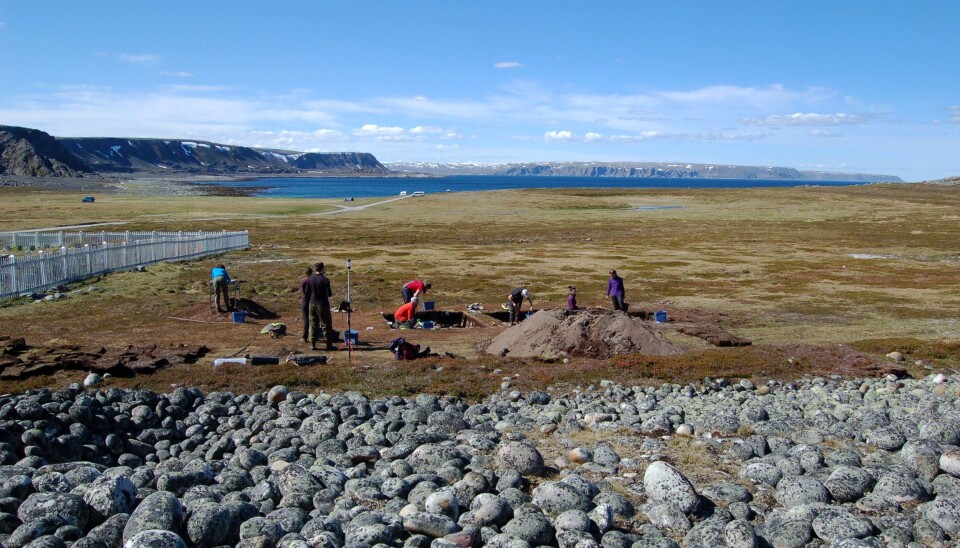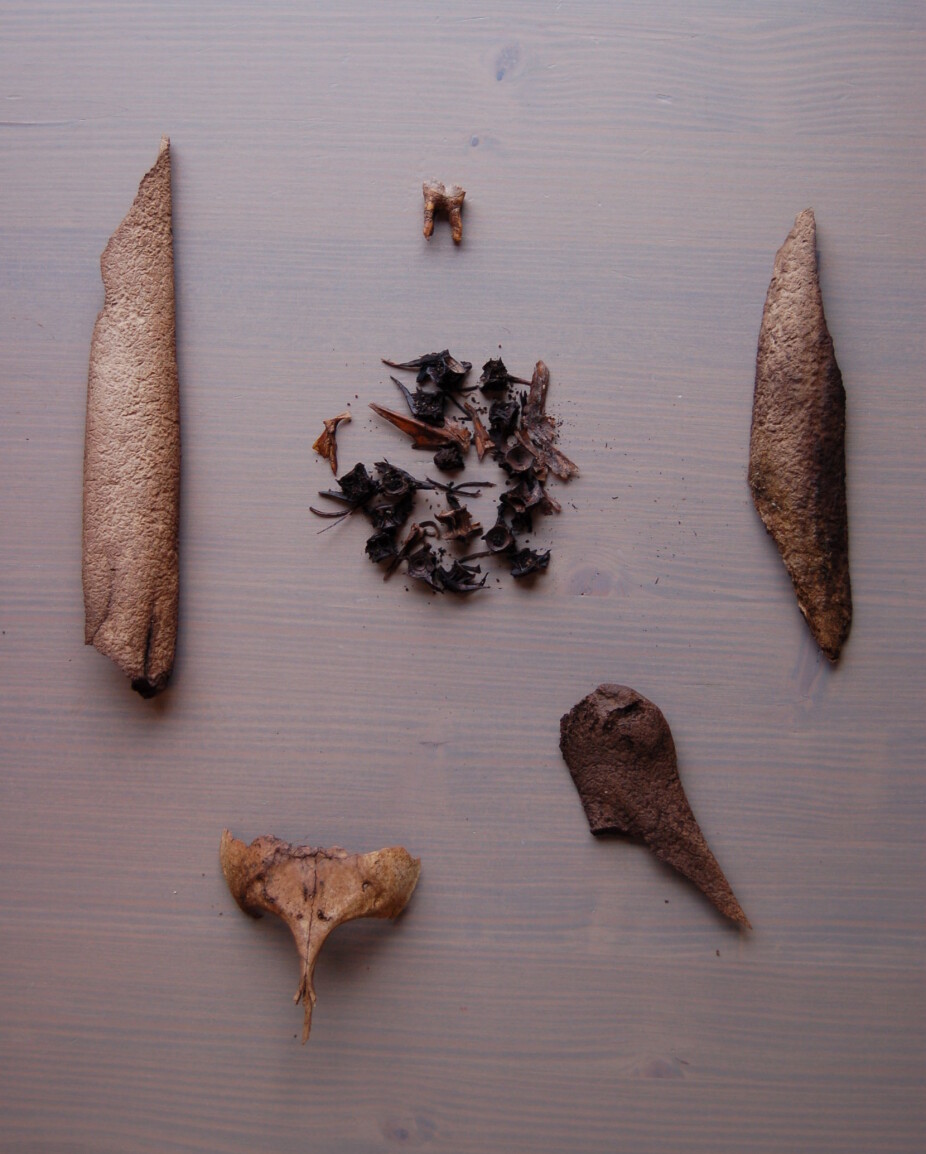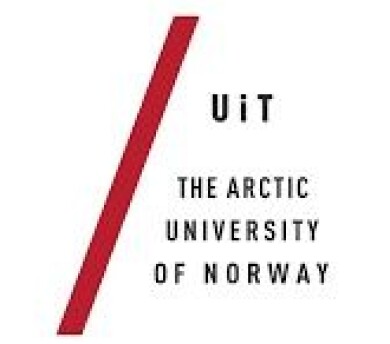This article is produced and financed by UiT The Arctic University of Norway - read more

Seafood full of poison in the Stone Age, because of climate change
Large amounts of toxic heavy metals such as cadmium and lead made cod and Greenland seals into harmful food in Northern Norway during the Younger Stone Age. Constantly rising sea temperatures and sea-level rise due to climate change can cause seafood to become equally unhealthy in the future.
This is what archaeology researchers are warning about in a recent study published in the journal Quaternary International.
"The discovery of so much toxic heavy metals in the seafood was very surprising, and we found very high values", says professor of archaeology at UiT The Arctic University of Norway, Hans Peter Blankholm.
22 times higher than today’s maximum limit
Together with other Norwegian and Swedish researchers, he has analysed findings that show that cod in the younger Stone Age had an up to 22 times higher content of cadmium than today's recommended maximum limit. It also had three to four times higher amounts of lead than is considered reasonable today.
The Harp seal, of which the Stone Age people also ate a lot, contained 15 times more cadmium than today's maximum limit and three to four times the lead limit.

"These substances are very harmful to our health. Cadmium, for example, is highly carcinogenic. We know that such heavy metals have no function in humans and that they can accumulate in the body when they are consumed. They can be broken down, but it takes a very long time. In other words, this seafood was very unhealthy - not to mention dangerous to eat a lot of, says Blankholm.
The researchers also found high values of mercury in cod and Harp seals, but the values were still slightly below today's maximum limit.
Settlements investigated in Varanger
The findings were made at settlements in Varanger in Finnmark that date back to the Younger Stone Age, that is, in the period 5000–1800 years BC. The age determination of the settlements is done using C-14 dating (carbon dating).
The preservation conditions for organic material, such as bones, are very good in these kinds of places, because of the presence of calcareous sand. This type of sand contains a lot of lime, which helps preserve bones for thousands of years.
"This has resulted in us finding many settlements around the Varangerfjord, which contain the remnants of people who lived in the Younger Stone Age. Among other things, we have found lots of organic material that tells us what the Stone Age people ate - like bones from fish, whales, and seals", says Hans Peter Blankholm.
"We have also found bones from seabirds and terrestrial animals, such as reindeer. However, very few remains of humans themselves have been found in these areas, and so far, we have not been able to analyse them for heavy metals. However, this will be done in a subsequent study", he says.
Instead, researchers have concentrated on analysing bone remnants of Harp seals, which are high up in the food chain, and cod which are ranked second highest in this chain. Isotope- and chemical element analysis has been used to achieve the findings.
Increase in content of heavy metals due to climate change
The researchers believe that climate change is the reason why seafood during this period was so polluted by toxic heavy metals.
When the ice began melting after the end of the ice age (approx. 10,000 years BC), huge water masses were released and the sea level began to rise. Increased sea level then led to erosion of large land areas, and the water took with it large quantities of soil containing toxic heavy metals. Thus, these metals were carried out into the sea, where they eventually entered the food chain of fish and marine animals.
"What we have observed from heavy metals in seafood from this era, leads us to believe climate change to be the cause. We believe we are on relatively safe grounds to claim it. We have also indicated that such pollution may increase with increasing sea temperature and a rise in sea level. This could have major consequences for the fisheries and seafood industry in the future", says Blankholm.
Lessons for the future
The researchers in the study are all part of a larger international research group, called Joint Proxies, led by Hans Peter Blankholm. The project aims to analyse far more of the organic discoveries from settlements in the northern hemisphere - before the material dissolves due to climate change (e.g. coastal erosion, thawing of permafrost and acidification).
"Archaeologists study the cultural change from a long-term perspective, and usually, people associate us with someone who can tell how things were before. We also want to make archaeology even more relevant to today’s society, and we can do that by saying that what happened in the past - can also happen in the future. That's what we call future archaeology: If we learn something sensible about the past - we can take it with us as lessons for the future", says Blankholm.
The research in this study of heavy metals is currently concentrated on the Varanger Peninsula in Northern Norway and covers a relatively short period. However, further research is being done with greater temporal span and geographical coverage, including studies of settlements on the Nordland coast and on the west coast, as well as on the west coast of Greenland.
A damning blow to the Stone Age diet?
Over the past 10 years, the Stone Age diet has received a lot of attention among people who want to lose weight. Supporters of a Stone Age diet want to eat foods that are as unprocessed as possible, and many believe the diet is healthier and more optimal for humans.
But this latest research shows that although the food was rawer in the Stone Age, it was not necessarily healthier. Is it at all worthwhile to try to follow a so-called Stone Age diet all the time you don't necessarily know how healthy the diet really was?
"It all depends on how balanced the diet is otherwise. What the study does show is that it is not good to eat too much of one type of food that is unhealthy even in small quantities", Hans Peter Blankholm replies.
Reference:
Hans Peter Blankholm mfl.: Dangerous food. Climate change induced elevated heavy metal levels in Younger Stone Age seafood in northern Norway. Quaternary International, 2020. (Sammendrag) Doi.org/10.1016/j.quaint.2020.01.019































